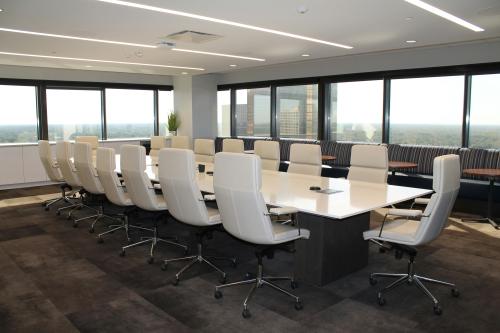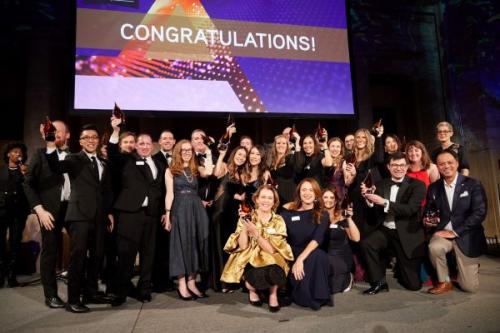Behind-the-scenes planning keeps heat off the dais
At annual meeting time, the spotlight shines brightly on the chairman, the directors and the senior leadership. Beyond the dais, however, a cross-functional team is working hard to keep the ‘heat’ down and the meeting running seamlessly.
‘Most shareholders never know the incredible amount of work that goes into preparing for the annual meeting,’ says Scott Andreasen, director, corporate governance and ethics and assistant corporate secretary at Sprint Nextel.
‘There are always going to be logistical challenges associated with pulling off an event of this magnitude,’ continues Andreasen. ‘But the biggest challenge for me is that there are so many moving parts [associated with] holding an annual meeting, and they all need to come together.’
Andreasen’s role is to manage the ‘overall process’ and ensure that the meeting occurs without any ‘hiccups’. In some companies like Sprint, that responsibility resides with the corporate secretary. Elsewhere, at Dell for example, investor relations may take the lead. However, no one department can pull off the annual meeting alone. Whoever leads the process must coordinate the activities of other functional areas such as corporate communications, marketing, public relations, corporate events, legal, and security.
Frequently, planning for the annual meeting begins a year in advance, immediately following a ‘post mortem’ of the last meeting. The venue, the logistics, the presentation and preparing for the Q&A are among the major hurdles the cross functional team must accomplish.
The composition of the shareholder base directly influences the size of the venue needed. Companies with a large percentage of institutional holders don’t tend to get many attendees. Conversely, companies with large numbers of individual investors, particularly if they also happen to be customers (utilities and retailers) need accommodations for more attendees. To reserve space at a desirable venue, companies need to ‘guesstimate’ attendance long before knowing if they’ll have a hot issue at proxy time that might draw a crowd.
Some companies like Public Service Enterprise Group (PSEG) solve that problem by booking a venue with expansion capabilities. Once shareholders fill the mezzanine area of the New Jersey Performing Arts Center, PSEG can expand seating to higher and higher tiers of the facility, if needed. A shared theatre at H&R Block’s headquarters recently accommodated 300-400 stockholders (up from regular attendance of about 80) drawn by a proxy fight. Attendance at Dell’s annual meeting, which has been hovering around 300-400 (after hitting a high of 2,500 in the 1990s), supports moving the meeting to a more intimate setting at corporate headquarters.
Most companies have stepped up security at annual meetings and are requiring attendees to present proof they are stockholders. ‘We now provide a phone line and a fax line at our registration desk in the event that someone shows up without proof of ownership,’ says Katherine Smith, associate counsel at Allstate. This enables attendees to call their broker and request a faxed copy of their statement.
Before the meeting begins, board members and executives are often on hand to welcome and speak with shareholders. Some companies offer attendees cookies and light refreshments. PSEG provides bite size sandwiches, a favorite of the customer-shareholders, including many retirees, who attend their annual meetings.
Keeping attuned to stockholders’ concerns helps companies prepare for their annual meeting. ‘We like to know what is on the minds of our stockholders,’ says Edward Biggins, PSEG’s corporate secretary. ‘When we send out our materials for the annual meeting we ask our stockholders if they have any comments they would like to provide. If we see any hot buttons, we make sure that we address these points in our prepared remarks.’
At Dell, where the retail investor base tops 35 percent, many customer-investors also attend the annual meeting. According to Lynn Tyson, Dell’s vice president of IR: ‘We give [the annual meeting] as much attention as we do our analyst meetings.’ However, she cautions, ‘If you look at the shareholder meeting as an event unto itself, you really diminish your ability to hold a shareholder meeting that adds value for the management team as well as shareholders.’
‘The shareholder meeting should not be the only time there is communication between a company and investors,’ adds Tyson. ‘If a company is doing a good job in IR, they’re having a constant dialogue with all investors. Issues and questions should be addressed all the time. By the time you reach the shareholder meeting there should be no surprises.’
Not your average questions
To help avoid surprises, companies typically develop a comprehensive ‘Q&A book’ for the chairman and executives detailing hot topics. ‘Annual meeting Q&A prep is different from normal Q&A prep because you are prepping management for the most off-the-wall questions,’ explains Beth Saunders, managing director at FD-Ashton Partners. ‘You aren’t really prepping them for in-depth strategic questions like you might for an earnings call.’
‘There’s nothing off limits,’ asserts Biggins. ‘Those who come to the meeting are stockholders and, as such, they are owners of the company. They have a right to ask any questions that they have on their minds.’
Even with planning, challenging situations arise. ‘Something is going to go bump in the night,’ counsels Smith. ‘Make sure you have everybody’s phone numbers ... and know how to alert the right people to handle the inevitable surprises.’ That kind of thinking proved invaluable when Allstate’s team learned the evening before one annual meeting that Jesse Jackson planned to attend and make some comments.
Sometimes the Q&A session is uneventful. ‘Even with the proxy fight [last year] and all the focus on the meeting, we did not have a single shareholder question during our Q&A session,’ recalls Bret Wilson, vice president and secretary at H&R Block. Overall, companies need to strike a balance between maintaining order and having a good, flexible meeting. Wilson says, ‘If [shareholders] want to ask questions and make comments they should be able to do that with a reasonable amount of freedom so long as they don’t impair other shareholders’ rights to have the same ability.’
Despite reports about growing investor interest in gaining access to directors and management, annual meeting attendance has been stable, or even declining, for the companies mentioned in this article. (Unless there’s a proxy issue.) Increasingly, companies are employing technology to enable investors to access their annual meetings. Dell webcasts its meeting and takes questions via the internet; Sprint provides a free teleconference hookup so shareholders can listen in; on behalf of some clients, Saunders disseminates webcasts of the chairman’s presentation to the investment community. Throughout the year, many company websites offer shareholders a wealth of information, including ways to gain access to directors.
Overall, annual meetings represent an important occasion for public companies to communicate with stockholders. Whether you hold your annual meeting in a hotel, a theater, a sports arena, or the company cafeteria, it’s important to begin planning early and involve many different functional areas.
Details can be overwhelming but the annual meeting team must be in control. ‘We need to be in touch with the pulse of investors,’ says Tyson. ‘We need to be on top of logistics and have investors walking away feeling that they have interacted with the senior management team. But at the end of the day I don’t want any surprises.’
‘The goal for everyone involved is to try to ensure that the day goes as smoothly as possible and that surprises are kept to a minimum or zero,’ agrees Smith.








